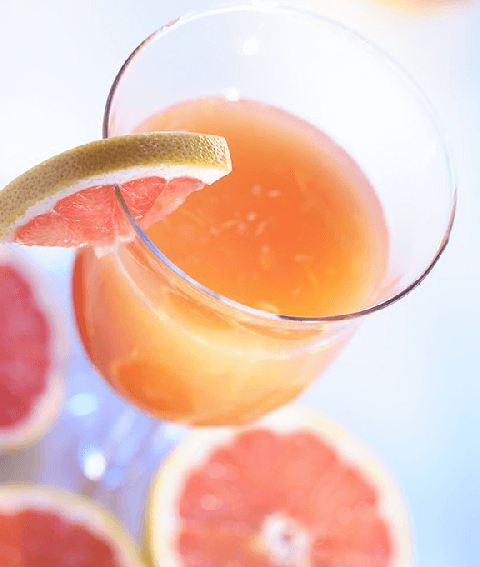
The best that there is!
It would be hard to design a better food than fruit. No fat, cholesterol, or sodium. Lots of fibre, taste, and (usually) vitamins. And it may help reduce the risk of cancer.
Except for the fibre, fruit juice, has the same advantages. In fact, Canada’s Food Guide to Healthy Eating counts each petite ½ cup (125 ml) of fruit (or vegetable) juice as one of the five to ten servings of fruits and vegetables we should eat every day. To ensure adequate amounts of fruit and vegetables, remember to eat a maximum of 3 fruit and 6 vegetable servings daily.
What most people don’t realize is that some juices are far more nutritious than others. We rate the most common juices according to how much a day’s worth of vitamins and minerals each cup (250 ml) supplies. For most juices, we averaged the numbers for bottled, chilled, canned, and frozen concentrate. Here are our findings:
Orange – is by far the best. A glass of OJ has over a day’s vitamin C and a quarter of a day’s Folacin/Folic Acid, the B-vitamin that reduces the risk of birth defects and that may help protect against heart disease. It also has more than ten per cent of a day’s potassium (which may help prevent high blood pressure), magnesium, and thiamin, plus at least five per cent of copper and vitamin B-6. Some orange juices – Minute Maid, Oasis, and Tropicana’s new Calcium & Vitamin C Supplement, for example – now contain added calcium.
- Grapefruit – has almost as much vitamin C, B-6, copper, and potassium as OJ, but less thiamin and hardly any Folacin.
- Prune – has between ten and 25 per cent of a day’s iron, magnesium, potassium, vitamin C, and riboflavin, and slightly less copper and niacin.
- Pineapple – has half a day’s vitamin C and at least 10% of a day’s potassium, thiamin, copper, magnesium, vitamin B-6, and Folacin.
- Grape – scrapes the bottom of nutrient barrel.
- Apple – is even lower than grape.
- Cranberry Cocktail – can be grouped with apple and grape but may be worth drinking. In a study of older women, those who drank ten ounces (312 ml) every day had half the risk of urinary tract infections of those who given a cranberry free beverage.
Three Rules to help you find the best juices:
- Shoot for the most nutritious juices. The top four: orange, grapefruit, prune, and pineapple. Just looking at the name on the bottle or carton isn’t enough. Oasis Health Break Wild Blueberry Cocktail, Fresh’n Tasty Orange-Peach Juice, and Dole Tropical Fruit Juice all have apple, grape, or pear as their main juice.
- Check the ingredient list. Look for no added sweeteners like sugar, glucose, fructose, honey, molasses, or corn and other syrups. Avoid artificial sweeteners like NutraSweet (aspartame) and Acesulfame K (acesulfame potassium). A search for added sweeteners is critical for “nectars,” “drinks,” “spritzers,” “cocktails,” and “punches.” Del Monte’s Prune Nectar, for example, is 100% juice. McCain’s Grape Nectar is only 50 juice and Fairlee’s Mango Nectar is 35%. Go figure! Or take Minute Maid Premium frozen concentrates. Despite pictures of fruit all over their labels, only the orange, grapefruit, and lemon juices are 100% juice. The rest (like Watermelon Punch) contain a measly 10% to 15% juice.
- Fortification is fine, as long as it is not fortified junk. A juice like McCain Tropical 5, a mixture of pineapple, orange, passion fruit, lemon juice and mango puree, is simply a good juice made better by the addition of some extra vitamin C to bring the content up to 100 per cent of the recommended daily intake. A glass of Sunny Delight, on the other hand, is just a “vitamin C and thiamin pill, with a tablespoon of juice, some sugar and orange-coloured water.”


